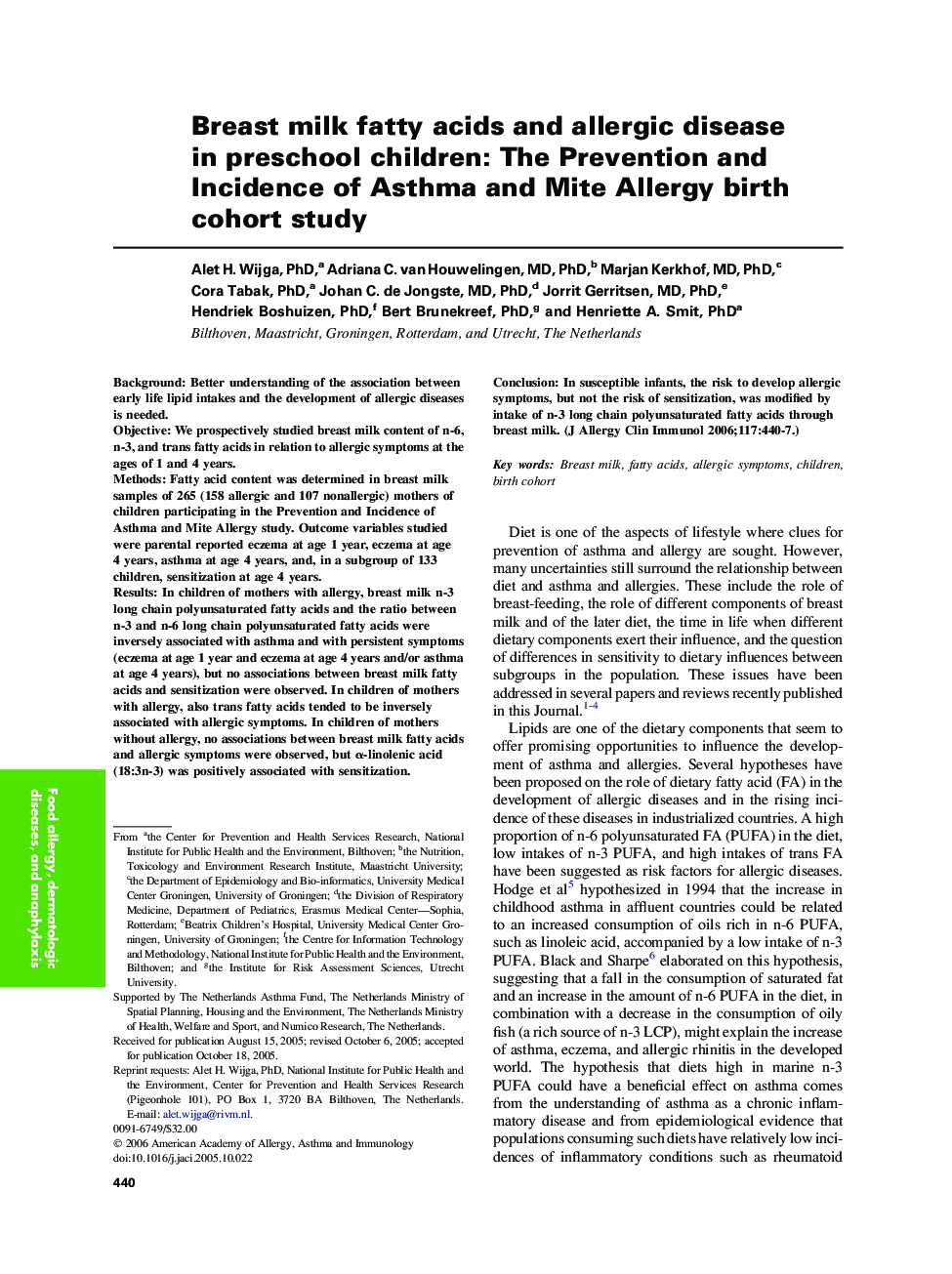| Article ID | Journal | Published Year | Pages | File Type |
|---|---|---|---|---|
| 3203275 | Journal of Allergy and Clinical Immunology | 2006 | 8 Pages |
BackgroundBetter understanding of the association between early life lipid intakes and the development of allergic diseases is needed.ObjectiveWe prospectively studied breast milk content of n-6, n-3, and trans fatty acids in relation to allergic symptoms at the ages of 1 and 4 years.MethodsFatty acid content was determined in breast milk samples of 265 (158 allergic and 107 nonallergic) mothers of children participating in the Prevention and Incidence of Asthma and Mite Allergy study. Outcome variables studied were parental reported eczema at age 1 year, eczema at age 4 years, asthma at age 4 years, and, in a subgroup of 133 children, sensitization at age 4 years.ResultsIn children of mothers with allergy, breast milk n-3 long chain polyunsaturated fatty acids and the ratio between n-3 and n-6 long chain polyunsaturated fatty acids were inversely associated with asthma and with persistent symptoms (eczema at age 1 year and eczema at age 4 years and/or asthma at age 4 years), but no associations between breast milk fatty acids and sensitization were observed. In children of mothers with allergy, also trans fatty acids tended to be inversely associated with allergic symptoms. In children of mothers without allergy, no associations between breast milk fatty acids and allergic symptoms were observed, but α-linolenic acid (18:3n-3) was positively associated with sensitization.ConclusionIn susceptible infants, the risk to develop allergic symptoms, but not the risk of sensitization, was modified by intake of n-3 long chain polyunsaturated fatty acids through breast milk.
